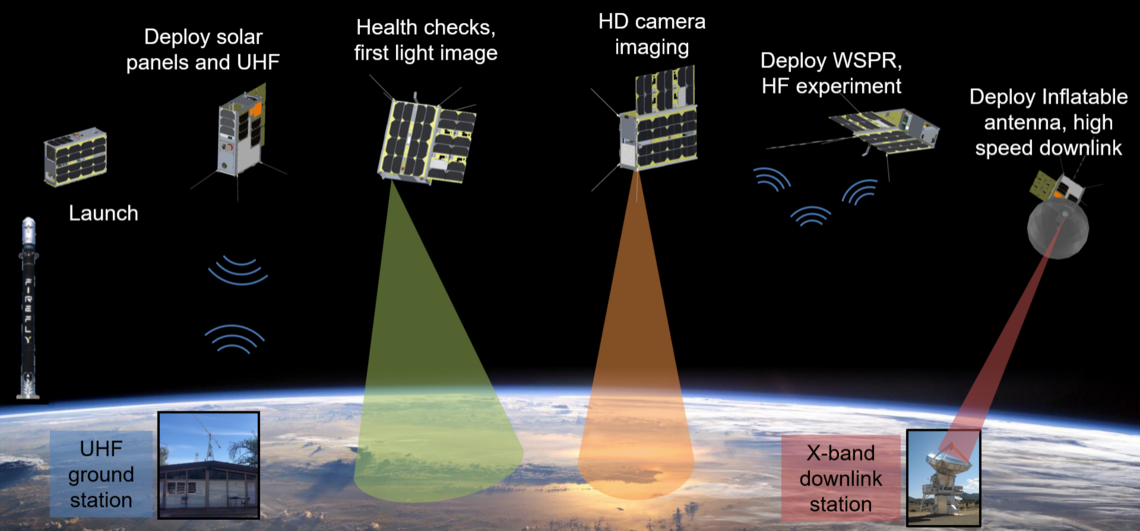
After release from the launch vehicle, a careful process begins to commission the satellite for operation. Forty minutes after separation, the flight computer powers on. The UHF command and control antennas at the rear of the spacecraft are deployed and begin transmitting beacons containing information about the spacecraft. The onboard Attitude Determination and Control System stabilizes the spacecraft. The deployable solar panel deploys to supplement the power flow from the fixed solar panels and charge the spacecraft batteries. During all this process, the spacecraft is carefully monitored by operators on the ground to ensure that all systems are operating nominally. As the last step of spacecraft commissioning, a picture of the Earth is taken with one of the metrology cameras and sent back to the ground.
After the spacecraft has been commissioned, the payload commissioning begins. This step involves powering on the payload computer, testing the communication link through the X-band patch antenna, capturing images of the Earth using the HD camera, and deploying the HF antenna. Upon completion of these steps, data collection for the HF antenna can begin in earnest, listening for the movement of charge in the ionosphere.
After a suitable amount of data has been collected and the spacecraft is fully commissioned, the spacecraft will activate IADS and demonstrate the inflatable antenna. The deployment of the inflatable antenna marks the final step to fully qualifying the spacecraft. Regular data collection will continue, making full use of the larger data transmission capabilities of the inflatable antenna.
Eventually, drag created by the thin remnants of the atmosphere will slow the spacecraft to below orbital velocity. The spacecraft will burn up in the fires of re-entry, leaving one last mark on the ionosphere. Knowing when this will occur is difficult, but current estimates put this occurring at about 1 year after launch.


